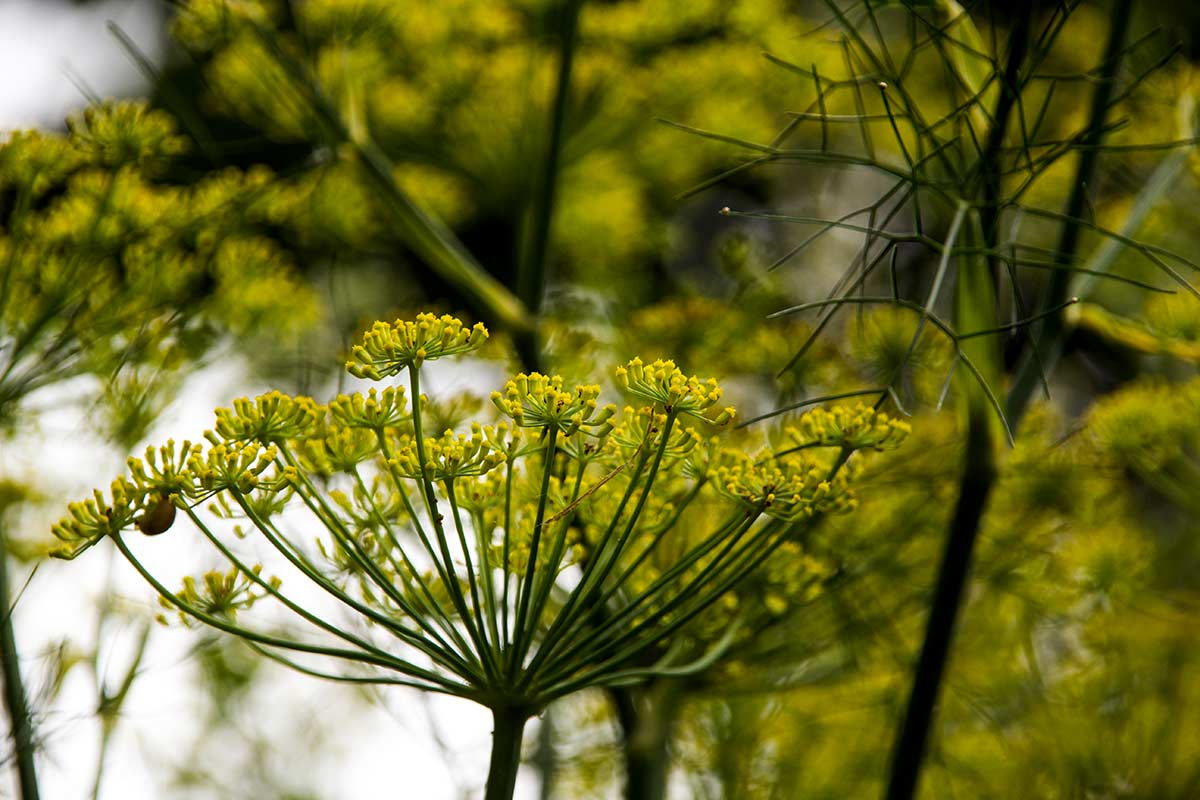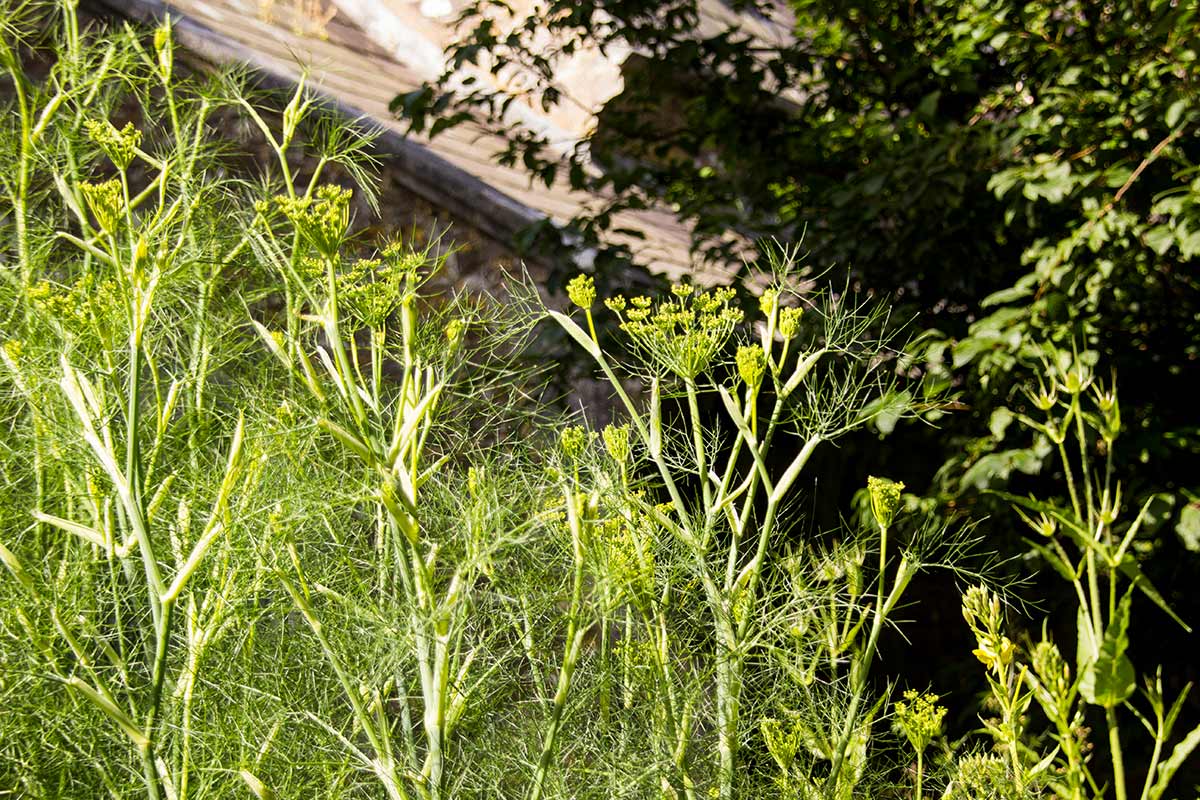Fennel
Common names
Latin name
Family
Parts used
Botanical description, cultivation and harvesting
Can reach 1-2 m in height. The plant is hairless and has finely divided leaves. The flowers are yellow and held in umbels. The fruit are ovoid. It is indigenous to Southern Europe and naturalized particularly in coastal regions; it is also cultivated in China, India and Egypt and all temperate regions. The fruit are harvested in the autumn when plump and still green (they turn bitter as they become brown). Leaves are harvested throughout the season. Roots are harvested in the autumn.
History, folklore, taste and energetics
Traditionally regarded as a sacred plant in many cultures, one that protects against evil and witches. Sweet, warming, dry, pungent and aromatic.
Constituents
At least 1% essential oil, mainly anethole and fenchone, Flavonoids including rutin, Coumarins, Sterols, Essential fatty acids,Vitamins and minerals
Actions
- Carminative
- Aromatic
- Orexigenic
- Anti-inflammatory
- Antimicrobial
- Diuretic
- Hormonal tonic
- Laxative
- Cardiotonic
- Expectorant
- Galactogogue
- Circulatory stimulant
- Stimulating nervine
- Detoxifier
Traditional and current uses
- Flatulent dyspepsia
- Anorexia
- Diuretic for cystitis
- Increases breast milk production
- Relieves colic, for nursing babies the tea can be taken by the mother. Otherwise a diluted infusion can be given in teaspoonful amounts before feeding.
- The Romans believed it to be good for dimness of vision
- Combined with laxatives to reduce griping
- For loose teeth, laryngitis or sore throats as a mouthwash or gargle
- Helps to eliminate high amounts of uric acid
- Stimulates the metabolism
- Gargle for sore throats
- Helps shift catarrh
- Topically the tea can be used as an eyewash for conjunctivitis and blepharitis.
- Detoxifying
- Tonic for the kidneys and spleen meridians
- As a diuretic useful for arthritis, gout, cellulite and oedema
- Hormonal action makes it useful for PMS and menopausal symptoms
- A uterine stimulant that should be avoided at high dose in pregnancy but is safe to use in food still
Recipes
Used in Indian and Chinese cooking to flavour a wide range of dishes. Good in vegetable stir fries and rice. Used in fish dishes - use the seeds, or the green herb in this case. The stems can be used to make fish kebab skewers. Green herb can be added to salad, check intensity of flavour before adding so as not to overwhelm the dish. Also, good with eggs - chopped into omelette, scrambled egg or egg mayonnaise. Can be added herbal seasoning blends such as Herbs de Provence.
Fennel and cheese straws
100g strong white or wholegrain flour
50g butter or olive oil
50g mature cheese (cheddar, pecorino or similar)
1 egg yolk (optional)
¼ teaspoon mustard powder, ground black pepper or cayenne powder (optional)
Salt to taste
2-3 teaspoons crushed fennel seeds
Mix flour, salt to taste and cayenne (mustard or black pepper) together in a bowl. Rub through fat with fingertips lightly until it looks like bread crumbs. Use a light tough and cool hand if possible. Add the finely grated cheese and stir through the egg yolk. Add enough cold water to make a stiff dough, lightly knead. Leave to sit in the fridge or a cool place for 20 minutes. Roll out the dough as thinly as possible and cut into strips 7-8cm long and 1.5 cm wide. Strips can be twisted or left flat. Arrange on a greased baking tray, sprinkle with a little olive oil and fennel seeds. Bake at 20 oC for about 12 minutes or until golden. Cool on a wire rack. Can be stored in an airtight container for about a week.
Aromatic rice
1 cup brown basmati rice
3 cups water
1 teaspoon vegetable bullion powder or ½ teaspoon herb salt
1 dessertspoon sesame seeds
5 cloves
1-2 teaspoons fennel seeds
Soak the rice in the water for ½ hour. Add other ingredients and simmer gently for about 30 minutes until cooked. A little olive or other cold pressed oil can be stirred through before serving.
This amount is about right for 3-4 people with accompanying dishes
Cautions
Essential oil: Do not use in pregnancy, avoid in epilepsy, for children under 6 years of age, and avoid prolonged use.


